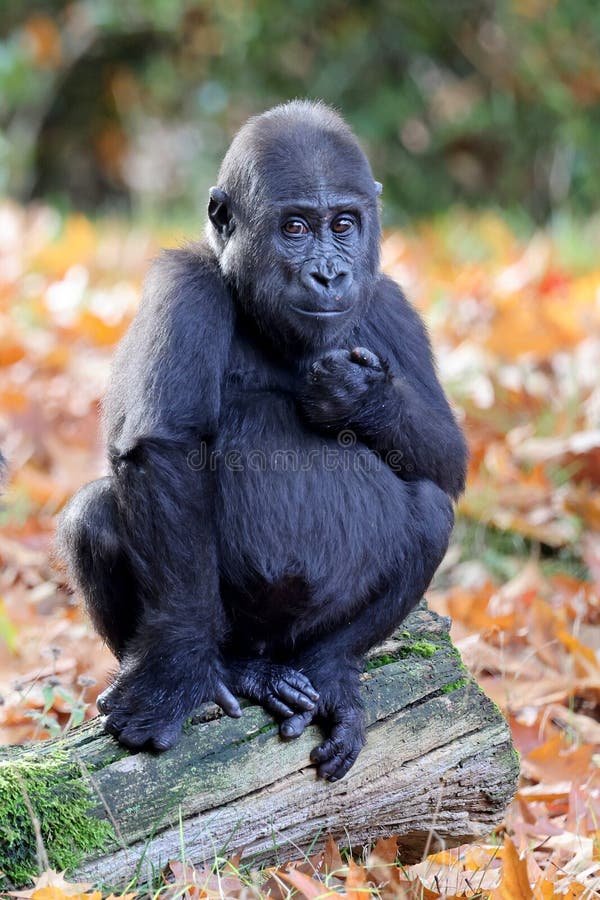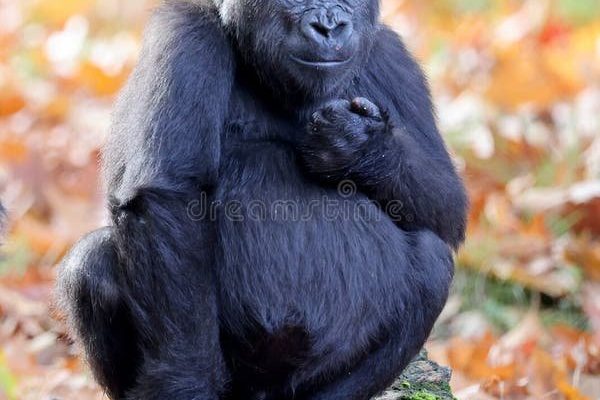
Just like humans, western gorillas showcase a range of cognitive abilities. From problem-solving skills to complex social interactions, understanding their intelligence helps us appreciate them not just as animals but as beings with their own ways of thinking and feeling. In this journey, we’ll explore their behaviors and abilities, peeling back the layers on what makes them tick and how that relates to their environment. So, grab a cup of coffee and let’s dig into the fascinating world of western gorillas!
Cognitive Abilities: An Overview
Western gorillas, scientifically known as *Gorilla gorilla*, exhibit a variety of cognitive abilities that are nothing short of remarkable. They are known for their problem-solving skills, memory, and communication, which set them apart from many other species. Think about it this way: if animals had report cards, gorillas would surely get top marks in social intelligence and adaptability.
Research shows that gorillas can perform tasks that require understanding cause and effect, which speaks volumes about their cognitive capabilities. For instance, studies have demonstrated that they can use tools, like sticks, to extract termites from mounds, similar to how chimpanzees do. This ability to manipulate objects in their environment shows not just intelligence but also creativity.
Moreover, their memory is impressively strong. Gorillas can remember the locations of food sources and are adept at recalling social relationships within their groups. This means they don’t just roam aimlessly; they navigate their world with understanding and intent, forming bonds and networks that are crucial for their social structure.
Social Intelligence and Communication
Here’s the thing: western gorillas are not solo artists. They thrive in social groups called troops, often led by a dominant male. Their social interactions are complex and rich, reflecting a depth of intelligence that many may not recognize at first glance.
Gorillas communicate using a mix of vocalizations, gestures, and facial expressions. For example, a simple grunt might indicate satisfaction, while a series of hoots can express excitement. Think of it as their own language, complete with nuances that convey feelings and social status. You might even see them use sign language in captivity, which showcases their ability to learn and adapt communication methods to engage with humans.
Their social structure is built on relationships, and they demonstrate empathy by comforting one another during stressful situations. It’s not uncommon to see a mother gorilla nurturing her young with tender care, which speaks volumes about their emotional intelligence. This bond is crucial for the survival of their young, as it fosters not just growth but also learning.
Problem-Solving Skills in the Wild
When faced with challenges, western gorillas show an impressive ability to think on their feet. For instance, if they encounter obstacles like a fallen tree blocking their path, they don’t just turn around; they assess the situation and find ways to navigate around it. This is not just instinct; it’s a thoughtful process that involves weighing options and making decisions based on their surroundings.
In one study, researchers placed food inside boxes that required different strategies to open. Gorillas quickly learned how to use their strength and dexterity to solve the puzzles, demonstrating not just intelligence but also patience. They could figure out the best approach, showcasing a methodical way of tackling problems. This kind of critical thinking is essential for their survival in the wild, as it helps them find food, avoid predators, and adapt to changing environments.
You might be amazed to know that learning through observation plays a significant role in their problem-solving skills. Younger gorillas often watch older ones before trying things for themselves, much like how humans learn from each other. This ability to learn socially is a critical aspect of their intelligence.
Tool Use: A Sign of Intelligence
Tool use is often touted as a hallmark of intelligence, and western gorillas are no strangers to this concept. Similar to their distant cousins, the chimpanzees, gorillas have been observed using sticks and leaves to help them forage for food. This ability not only shows their cleverness but also highlights their capability to manipulate their environment for practical purposes.
For example, if a gorilla finds a way to use a branch to extract ants from a mound, it’s not just about finding food; it’s about assessing the situation and using what’s available in a smart way. This implies a level of planning, foresight, and problem-solving skills that many animals don’t exhibit.
What’s fascinating is the idea that gorillas can innovate with tools. If they discover that a certain stick is effective at getting food, they may choose to use that same stick again in the future, showcasing not only memory but also the ability to improve techniques over time. It’s like having a personal toolbox in their mind, filled with tricks learned through experience.
Emotional Intelligence and Empathy
Let’s chat about emotional intelligence because it’s another area where western gorillas truly shine. These animals experience a range of emotions, including joy, sadness, and even grief. When a member of their troop passes away, the rest of the gorillas may exhibit signs of mourning—something that reveals their capacity for empathy.
Gorilla mothers, in particular, are incredibly nurturing, raising their young with care and guidance. They help their offspring learn crucial life skills, emphasizing social learning and emotional support. This nurturing behavior isn’t just instinctive; it reflects an understanding of the needs of their young.
You might find this particularly touching: gorillas engage in comforting behaviors when a troop member is upset. Whether it’s a gentle touch or a reassuring call, these actions illustrate not just their emotional depth but also the bonds they form within their community. By caring for each other, they enhance their social structure and foster a sense of belonging that’s vital for their survival in the wild.
As we wrap up our exploration of western gorillas and their cognitive abilities, it’s clear that these magnificent creatures are much more than meets the eye. Their intelligence reflects a rich tapestry of problem-solving skills, social interactions, and emotional depth. By understanding how smart they are, we not only appreciate them better but also recognize the importance of conserving their habitats and protecting their future.
Honestly, when we learn about their behaviors and intelligence, it deepens our connection to all wildlife and reminds us that we share this planet with extraordinary beings. So the next time you see a western gorilla, take a moment to think about their remarkable mind and the complexities that come with it. These creatures are not just our cousins in the animal kingdom; they’re incredibly intelligent beings deserving of our respect and protection.

